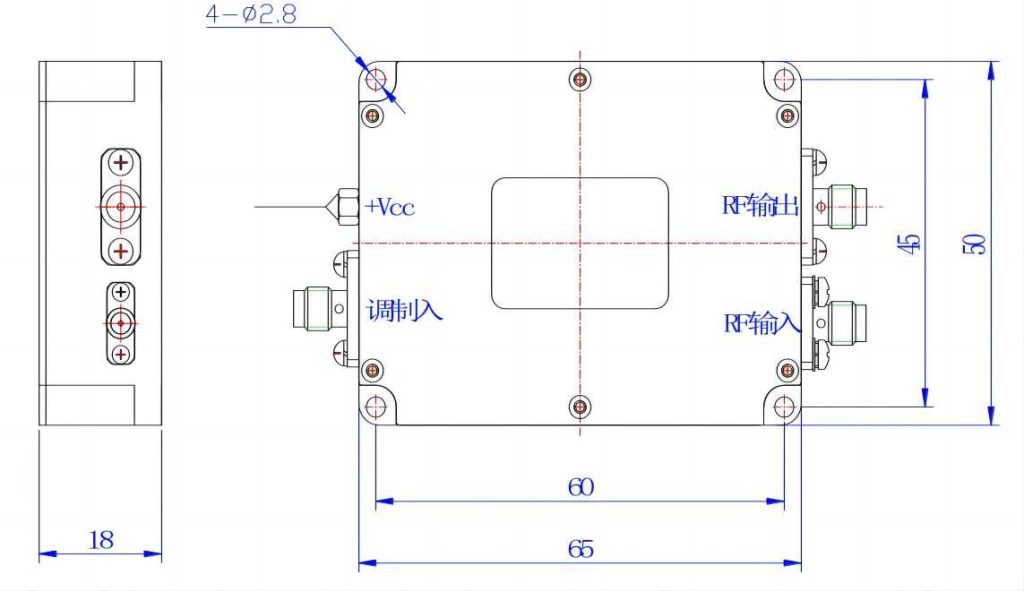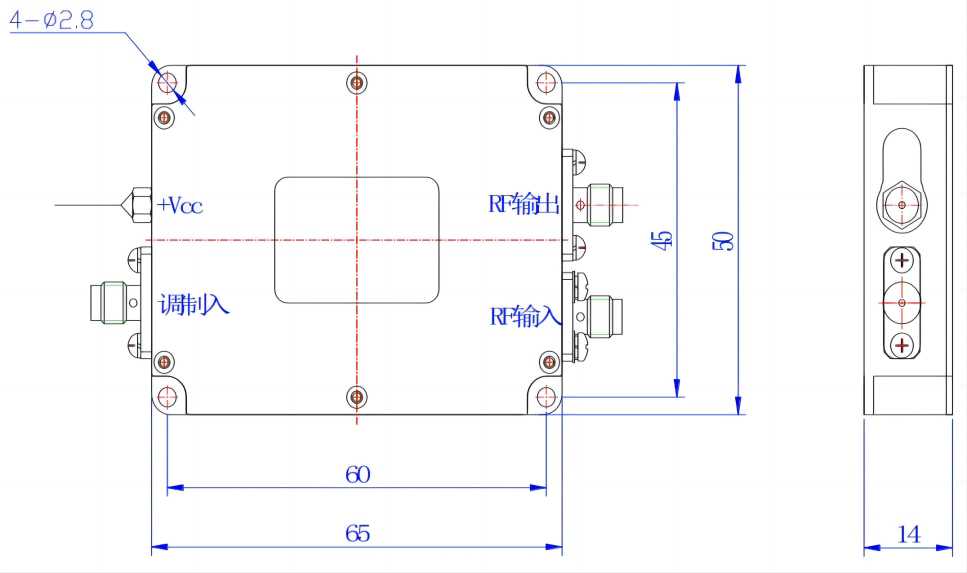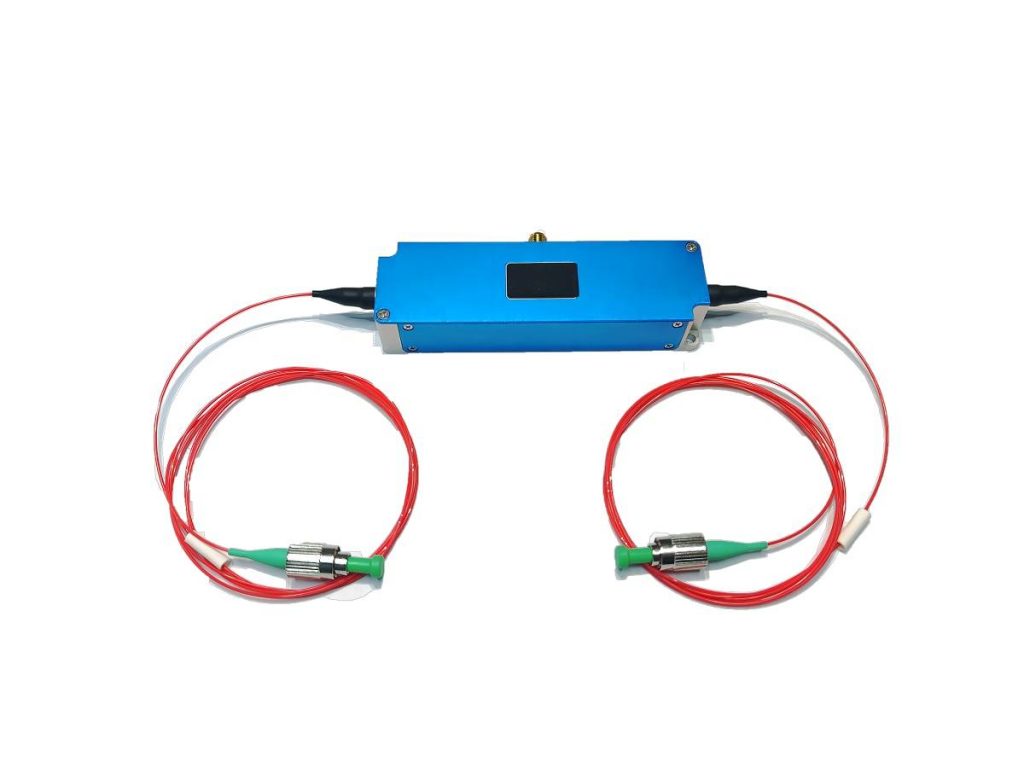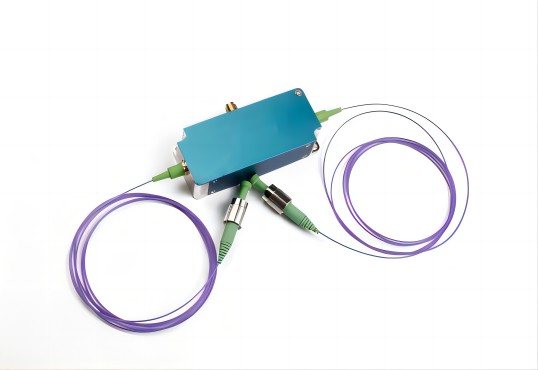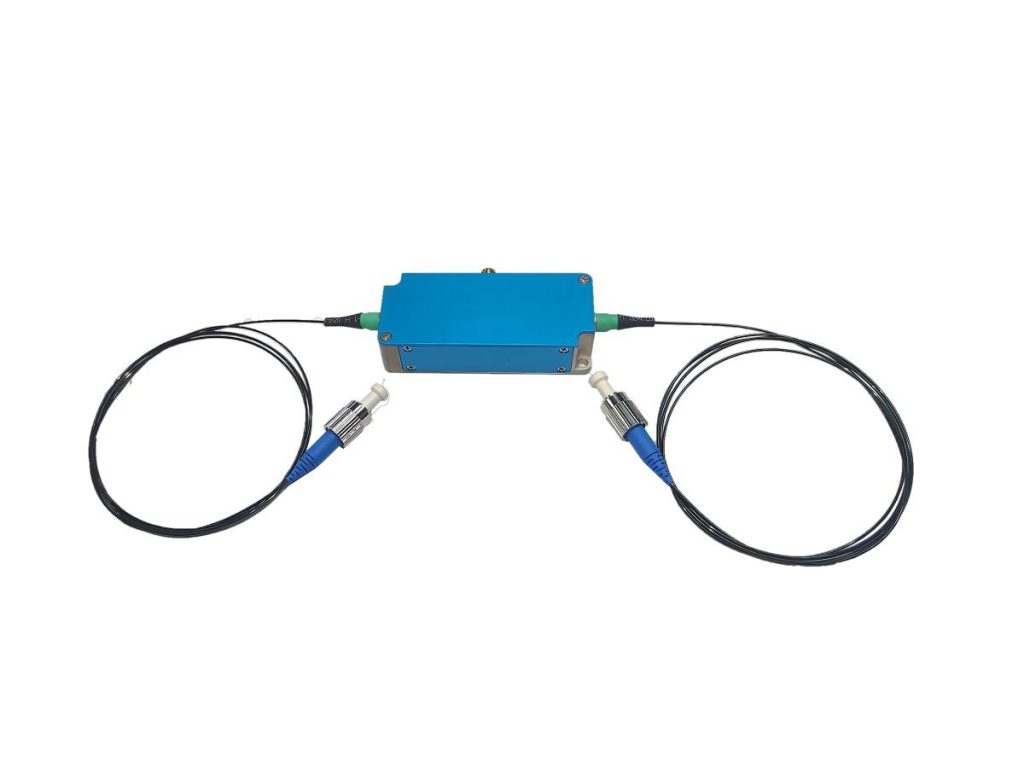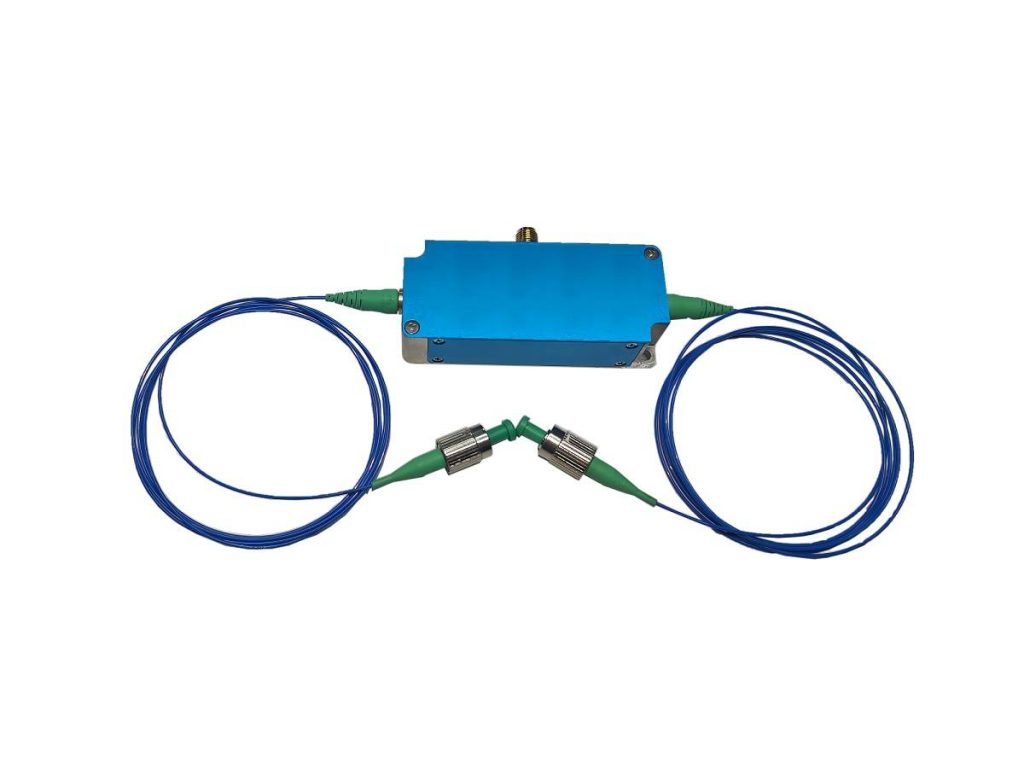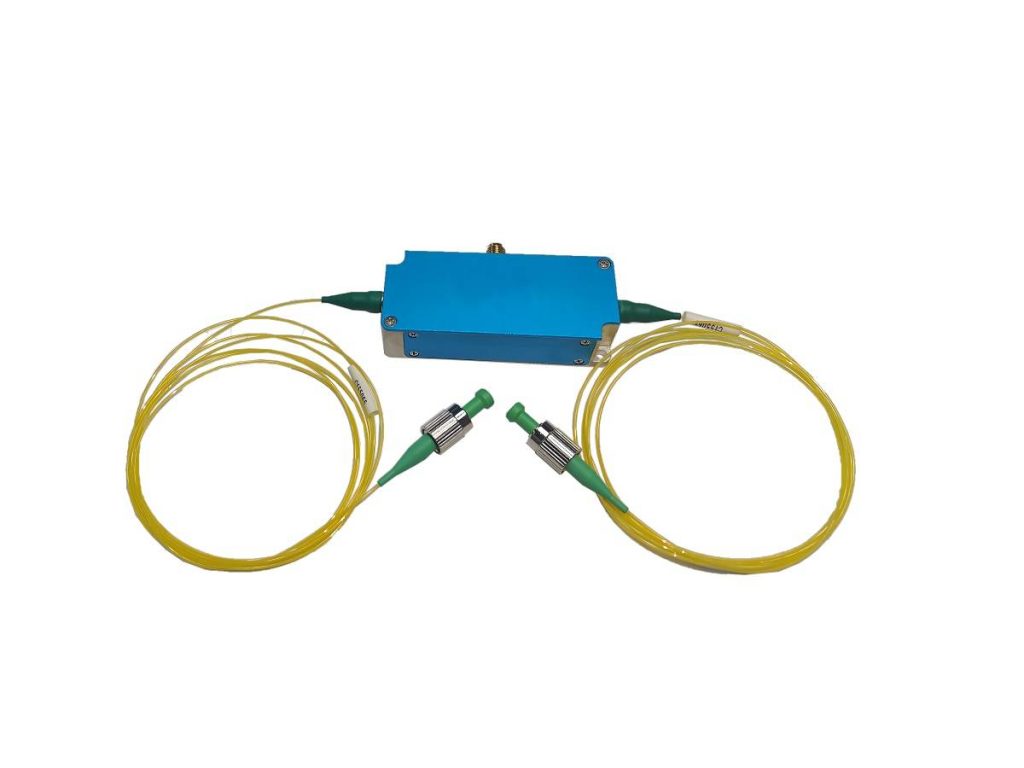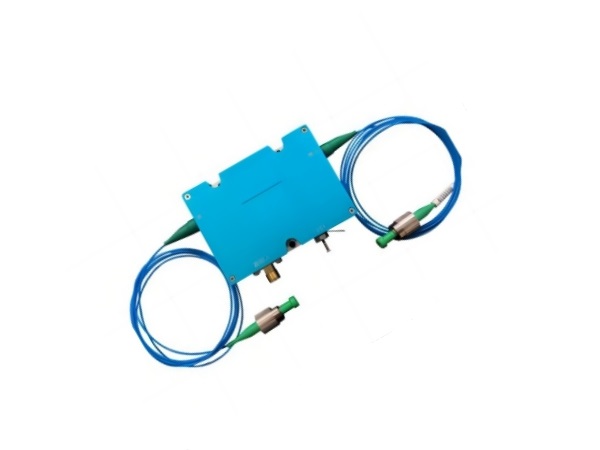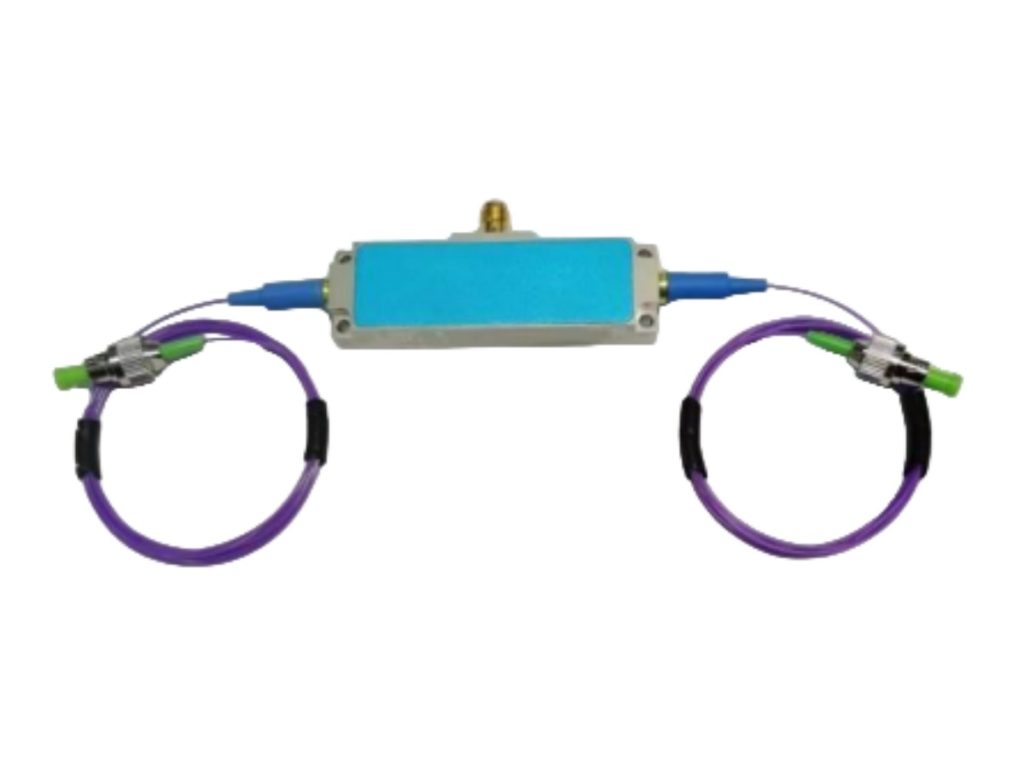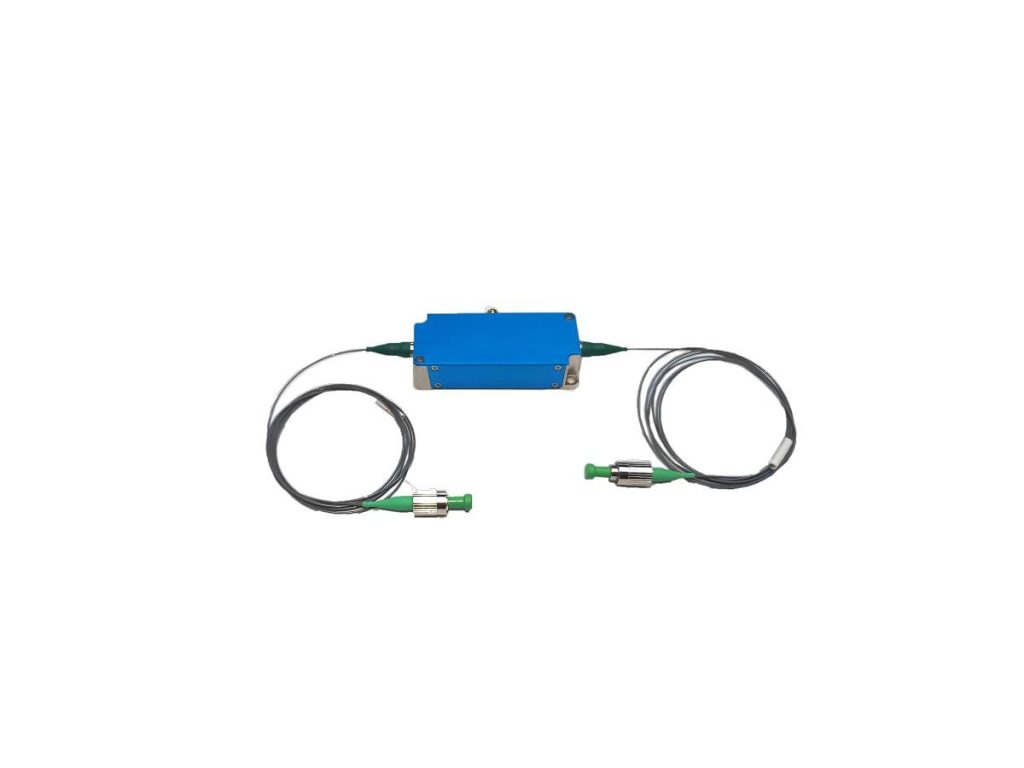
532nm Fiber AOM Series
An acousto optic modulator is a product that leverages the acousto-optic interaction principle to modulate laser intensity and shift its frequency. Operating across the wavelength range from visible light to the infrared region, this modulator features an all-metal structure design, a compact and robust sealed packaging structure, and employs innovative packaging technology to guarantee high reliability and temperature stability.
Characteristics of 532nm Fiber AOM Series
- Short response time
- Low insertion loss
- High extinction ratio
- High-temperature stability and reliability
- Small size
Applications of 532nm Fiber AOM Series
- Q-switched fiber laser
- Laser Doppler coherent application
- Ultra-fast laser frequency reduction menu
- Linear frequency modulation
Ordering Information of 532nm Fiber AOM Series
This indicator is a typical optical wavelength indicator, and other wavelengths and frequencies can be selected
| Parameter | Unit | SGTF100-532-1P | SGTF150-532-1P | SGTF200-532-1P | SGTF250-532-1P |
| Insertion loss | dB | <2.5 | <3 | <3.5 | <4 |
| Rise time | ns | <50 | <30 | <15 | <12 |
| Shift frequency | MHz | 100 | 150 | 200 | 250 |
| 3dB frequency shift bandwidth | MHz | >10 | >20 | >30 | >40 |
| Wavelength | nm | 510-550 | |||
| Optical power | W | ≤0.5 | |||
| On-off extinction ratio | dB | ≥50 | |||
| Polarization extinction ratio (PM device) | dB | ≥20 | |||
| Polarization dependent loss(SM device) | dB | <0.5 | |||
| Driving power | W | <2 | |||
| Fiber type | – | PM460(PM) | |||
| Optical fiber connector | – | FC/APC | |||
| RF input joint | – | SMA | |||
| Fiber length | m | >1 | |||
| Input impedance | Ω | 50 | |||
| VSWR | – | <1.3:1 | |||
| Package | – | FA/FH | |||
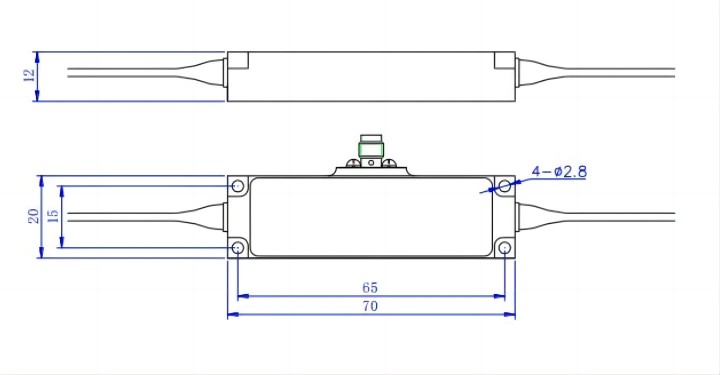
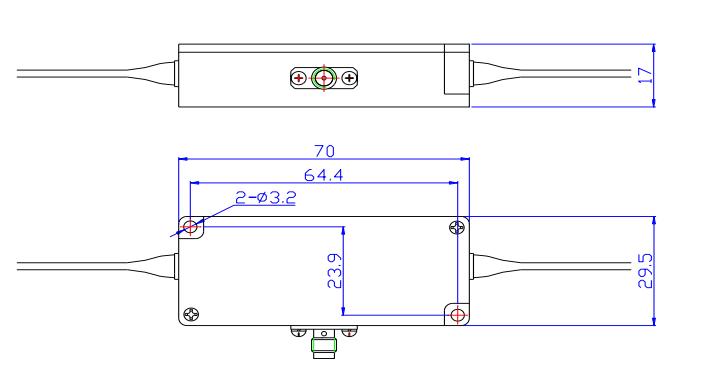
Low-power N-type Acousto Optic Driver for 532nm Fiber AOM Series
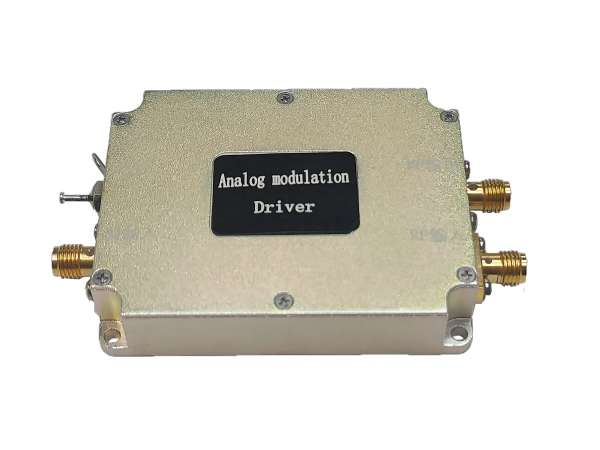
An acousto-optic driver is an RF driver designed to offer support for acousto-optic device products. It is suitable for driving acousto-optic modulators and frequency shifters with a power requirement of less than 3W. The RF signal produced by the driver is utilized to generate ultrasonic waves in the crystal of the acousto-optic device. The modulation, deflection, or tuning of the beam is influenced by the frequency and intensity of the applied RF signal. The driver features efficient heat dissipation, and employing a matched drive enhances temperature stability.
| Supporting Drive | The model (SGXXXX-33-N-ab) employs “X” to denote the frequency shift function, “Y” for the modulation function, and “T” for the modulation function. The “XXX” signifies the operating frequency, where “33” corresponds to the RF output power. “N” indicates the package type. The letter “A” is used with “1” representing a power supply voltage of 24V and “2” for a power supply voltage of 12V. The letter “b” is designated for modulation type, with “D” indicating digital TTL modulation and “A” representing analog modulation. | |||
| SGT100-33-N2-1D | SGT150-33-N2-1D | SGT200-33-N2-1D | SGT250-33-N2-1D | |
| SGT100-33-N2-1A1 | SGT150-33-N2-1A1 | SGT200-33-N2-1A1 | SGT250-33-N2-1A1 | |
| SGT100-33-N2-1A5 | SGT150-33-N2-1A5 | SGT200-33-N2-1A5 | SGT250-33-N2-1A5 | |
Performance of Low-power N-type Acousto Optic Driver on Fiber AOM
- Small size
- Fast response time
- Low power consumption
- High-temperature stability and reliability
| Item | Unit | Performance | |||
| Specifications of the modulation input interface | |||||
| Modulated signal input | – | Digital modulation (high level 3.3-5V; low level 0-0.2V@1k Ω) | |||
| Analog modulation (A1: 0-1V@50 Ω) | |||||
| Analog modulation (A5: 0-5V@1k Ω) | |||||
| Modulated signal input impedance | Ω | – | |||
| Interface | – | SMA | |||
| RF output interface specification | |||||
| Output signal frequency | MHz | 100 | 150 | 200 | 250 |
| Frequency stability | ppm | 20 ( 1 Special) | |||
| Output signal power | W | <2 | |||
| Rise and fall time | ns | <25 | <20 | <15 | <10 |
| Switching ratio | dB | ≥60 | |||
| Harmonic suppression ratio | dBc | >25 | |||
| Signal output standing wave ratio | – | ≤1.3 | |||
| Interface | – | SMA | |||
| Complete machine specification | |||||
| Maximum power consumption | W | 10 | |||
| Working voltage | Vdc | 24±1V(Optional 12±0.5) | |||
| Power interface | Through core capacitance (core wire is connected to positive, solder lug is connected to negative) | ||||
| Package | – | N/N2 | |||
